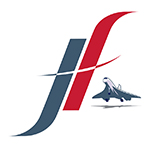Generation Next and the Jacobson Flare: Australian Flying Magazine – Nov/Dec 2020
From the earliest stages, back in 1985-87, David Jacobson has shared all aspects of the development of the Jacobson Flare, with as many students, pilots, instructors and other key stakeholders as were interested – for a number of sound reasons:
He wanted immediate feedback, to confirm whether or not he had discovered something interesting, worthwhile and viable;
He would have been no less excited about the breakthrough in HOW to explain the landing manoeuvre, factually and with solid quantification, no matter who had discovered it;
He felt strongly that others could take immediate advantage of the Jacobson Flare, even as each stage was rolled out and refined and then re-refined, ignorer to improve flight safety; and
He needed others to make independent assessments of the technique and presentation, from the very raw and clumsy initial depictions of 1985, right through to the launching of www.jacobsonflare.com in 2008 and the release of the two editions of the Jacobson Flare App for the iPad (2014) and then for both iOS devices, together with the free companion Jacobson Flare News App (2020).
David has always shared the Jacobson Flare, personally tutoring hundreds of pilots directly and thousands more, via the Jacobson Flare Apps. He is always overwhelmed by how far the acceptance of his work has progressed, since those early days, not to mention his original inspiration in 1965, while learning to fly as a 17 yo student pilot. Pilot comments made quite spontaneously, such as ‘having the elegant simplicity of the safety pin‘, ‘simple, unassailable, aerodynamic logic‘ and ‘you are the very first instructor ever to have taught me HOW to land an aeroplane‘, have provided valuable feedback and the continuing impetus to keep going and to do better at highlighting pilot awareness of its existence.
Encouraging flying schools and other flight training organisations to adopt the Jacobson Flare as their standard training technique, for the approach and landing manoeuvre has always been a big priority. Of course, we are aware of some, but it is impossible to know just how many have done so, but occasionally something very exciting pops up. The respected journal, Australian Flying, recently published an article, highlighting a group of young Australian student and licenced pilots, several of whom have trained at Avia Aviation, at Moorabbin Airport (YMMB), Victoria.
After considerable reflection and research on their part, Avia paid us the ultimate compliment of adopting the Jacobson Flare as their mandated approach and landing training technique and it is surely gratifying to learn of the steady and safe progress made by these young aviators, who have been introduced to the Jacobson Flare at such an early stage and will be able to rely on the incomparable benefits of this revolutionary tool, throughout their entire flying experience.
We highly commend The Australian Flare article: Generation Next
Wishing you many safe landings
Captain David M Jacobson FRAeS MAP
Would you care to experience that unsurpassed sense of accomplishment, derived from executing consistently beautiful landings, more often?
For starters, Download the FREE Jacobson Flare LITE, our no fuss/no frills introduction. Here we demonstrate, step by step, the application of the Jacobson Flare on a typical grass airstrip at Porepunkah, YPOK.
We invite you to browse the consistently positive comments on our Testimonials page. Many pilots, of all levels of experience, have downloaded our Apps. Read about their own experiences with the Jacobson Flare technique and the App.
Then download the COMPLETE Jacobson Flare app – for iOS. You’re already possibly paying $300+/hour to hire an aeroplane: You’ll recover the cost of the app, in just ONE LESS-NEEDED CIRCUIT. Moreover, you’ll have an invaluable reference tool, throughout your entire life in aviation.
Download the COMPLETE Jacobson Flare App for iOS devices now.
We invite you, also, to review our new, FREE companion app.
offering a convenient way of staying abreast of our latest blogs.
Download the Jacobson Flare NEWS App for iOS devices now.








